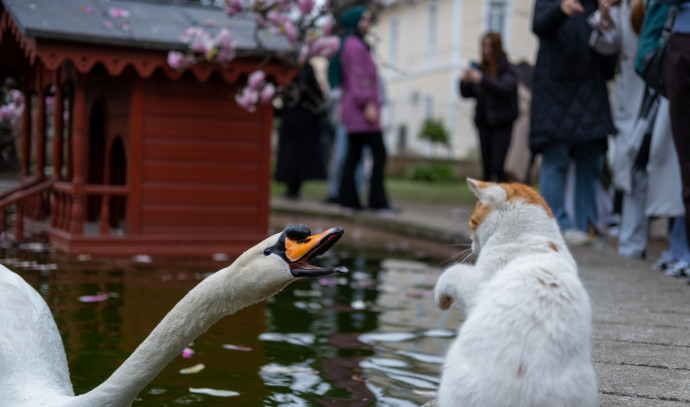European health officials advised pet owners to keep cat indoors to protect them from catching bird flu on Thursday, amid a series of incidents of cats and other mammals being infected with the virus around the world.
“It is recommended to avoid exposure of domestic cats and dogs, and in general carnivore pets, to dead or diseased animals (mammals and birds), and to avoid feeding domestic cats and dogs offal and raw meat from wild or kept birds in areas where mortality in gulls or other potentially HPAI virus-infected animals are reported. Possible measures are keeping dogs on a leash, and confining cats indoors in areas where extensive circulation of HPAI viruses in wild birds has been confirmed,” said the European Food Safety Authority (EFSA).
The EFSA recommended that pet owners be informed about symptoms of bird flu in infected pets, protective measures, and contact details of veterinarians and other authorities investigating bird flu in mammals.
The agency additionally recommended that countries increase passive surveillance of avian influenza in wild and free-roaming domestic carnivores, especially in areas with bird flu outbreaks.
The advisory from the EFSA comes after 24 cats and one caracal were found to be infected with the H5N1 subtype of avian influenza in Poland in recent weeks. Additionally, a cat and five dogs were found to be infected with the virus in Italy and last week, bird flu outbreaks were reported on a number of fur farms in Finland.
The source of infection for the outbreak in Poland remains unclear. In Italy, the pets lived on a poultry farm where an outbreak of bird flu had occurred. The virus samples collected from the pets infected in Italy was found to have a mutation considered a marker of adaptation of viruses to mammals, which may increase its potential to spread across species, according to the EFSA.
Mammals around the globe affected by bird flu
Reports of mammals being infected with avian influenza continue to spread across the globe, with mass die-offs of seals and sea lions reported in Russia and the Americas and dozens of foxes, skunks, dolphins, raccoons, cats, ferrets and other mammals found to be infected as well.
Dogs, cats, and other pets have been affected by the outbreak in multiple countries as well, including the US and Canada.
Since 2021, Europe and the Americas have been suffering from a continuous outbreak of H5N1 avian influenza which has been described as “the largest-ever” outbreak on all three continents. The outbreak, as well as other strains of the virus, has also spread to other locations around the globe.
Thousands of wild birds, over 58 million domesticated birds, and nearly 200 mammals have been confirmed to have been affected by the bird flu in the US alone. In Europe, tens of thousands of wild and domestic birds were found to be infected in over 24 countries, with many sea birds affected.
Human cases of H5N1 have been detected in the past two years in the UK, US, Cambodia, Ecuador, and Chile.
On Friday, the UK Health Security Agency reported that two additional human cases of H5N1 avian influenza among people with direct exposure to infected birds. Health officials were investigating if the individuals were actually infected or if the positive result came from contamination of the nose and throat from material from the environment.
WHO warns mammalian spread raise concern virus may adapt to infect humans more easily
Additionally, last week, the World Health Organization (WHO) issued a statement warning that the increasing number of H5N1 avian influenza detections among mammals “raises concern that the virus might adapt to infect humans more easily.“
“Some mammals may act as mixing vessels for influenza viruses, leading to the emergence of new viruses that could be more harmful to animals and humans,” added the WHO.
“There is a recent paradigm change in the ecology and epidemiology of avian influenza which has heightened global concern as the disease spread to new geographical regions and caused unusual wild bird die-offs, and alarming rise in mammalian cases,” said Dr. Gregorio Torres, head of the Science Department at the World Organization for Animal Health (WOAH).
“With the information available so far, the virus does not appear to be able to transmit from one person to another easily, but vigilance is needed to identify any evolution in the virus that can change that,” said Dr Sylvie Briand, director of Epidemic and Pandemic Preparedness and Prevention at WHO.
“WHO is working closely with FAO and WOAH, and laboratory networks to monitor the evolution of these viruses, looking for signals of any change that could be more dangerous to humans. We encourage all countries to increase their ability to monitor these viruses and to detect any human cases. This is especially important as the virus is now affecting countries with limited prior experience in avian flu surveillance.”



